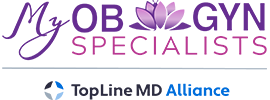Menstruation is an essential part of every woman’s life. It’s a natural process that requires careful management to ensure well-being and comfort. A key aspect of this management is menstrual hygiene – a subject that far too often eludes conversation yet is vital to the reproductive health and general well-being of women around the globe.
During the menstrual cycle, the body undergoes diverse changes. Some of these changes can expose individuals to certain health concerns such as bacterial vaginosis, yeast infections, urinary tract infections, and toxic shock syndrome. These concerns highlight the importance of maintaining proper hygiene during this time. Medical experts as centers such as My OBGYN Specialists offer patients consultations on proper vaginal hygiene during routine check-ups.
Advances in modern science and society’s gradual dispelling of menstrual taboos have led to an array of hygienic menstrual health products available in the market. From sanitary napkins, menstrual cups to tampons, and reusable menstrual products, there’s a solution out there for everyone. However, it’s not just about using these items, but using them correctly and cleanliness that matters.
Adopting mindful hygiene practices during menstruation is, therefore critical. It empowers women to take care of their bodies, boosts confidence, and aids in maintaining a healthy lifestyle. Furthermore, it helps prevent menstrual health issues and supports overall vaginal health.
The journey towards holistic menstrual wellness starts with understanding the significance of menstrual hygiene and embracing the best hygiene practices during your period.
The Physiology of Menstruation
Explanation of the Menstrual Cycle
The menstrual cycle, which lasts typically 28 days, is a recurring series of changes occurring in a woman’s body that prepare it for possible pregnancy. The cycle is divided into menstruation, the follicular phase, ovulation, and the luteal phase. An in-depth understanding of these stages and their interconnected physiological changes is beneficial when considering menstrual health products and feminine hygiene practices.
Menstruation or the shedding of the uterine lining marks the beginning of the cycle and usually lasts between 2 to 7 days. Hormonal shifts during menstruation can cause changes in vaginal pH, making the environment more susceptible to bacteria and infections.
Impact on Vaginal Health and Hygiene During Menstruation
Having good menstrual hygiene is essential to maintaining optimal vaginal health during each phase of the menstrual cycle. Without suitable period hygiene tips, the menstrual cycle may lead to potential complications, often due to the increased likelihood of bacterial growth in fluctuating pH environments.
Period hygiene products like sanitary napkins, tampons, and menstrual cups, when used correctly, can protect against such issues. For instance, it is paramount to remember to change these products every few hours to prevent bacterial build-up.
Menstrual cup cleaning is an important practice for those choosing this sustainable menstrual solution. A clean cup ensures hygiene is maintained and reduces the risk of Urinary Tract Infections (UTIs) and other genital infections.
Similar attention must be given to sanitary pads disposal. Proper disposal aids in maintaining hygiene during periods, eliminating the risk of bacterial and fungal infections due to unattended used sanitary napkins.
Feminine hygiene practices also encompass personal hygiene during periods. Regular bathing, washing of the genital area, clean underwear, and hand hygiene are non-negotiable when dealing with menstruation.
Reusable menstrual products like cloth pads and menstrual underwear can be good allies in managing menstruation cycle care if used and washed correctly. However, they require more detailed care as the risk of microbial growth increases with these alternatives.
Embracing menstrual hygiene habits such as these along with gaining period health education ensures effective hygienic menstruation management, ultimately supporting overall vaginal health during your period.
Practical Tips for Menstrual Hygiene
Selection of Menstrual Products: Pros and Cons
Choosing the right menstrual health products is integral to effective menstrual hygiene habits. Each product offers different advantages and potential drawbacks, depending on personal comfort, lifestyle, and menstrual flow.
- Sanitary napkins, for example, are easy to use and widely available, making them a popular choice worldwide. However, their use can contribute to environmental pollution, and they may cause skin irritation in some women.
- Menstrual cups, one of many sustainable menstrual solutions, are not only eco-friendly but also cost-effective in the long run. They hold more fluid than tampons or pads and lower the risk of toxic shock syndrome. However, they may take some time to get used to and require strict adherence to menstrual cup cleaning guidelines for safe use.
- Reusable menstrual products like cloth pads or period underwear are also environmentally friendly alternatives. They provide comfort and are less likely to cause irritation. However, they demand rigorous washing and drying routines to maintain hygiene.
Ultimately, the selection of menstrual products should be guided by individual needs and informed by proper period health education.
Proper Use and Disposal of Menstrual Products
Regardless of the chosen menstrual product, maintaining cleanliness is fundamental for hygienic menstruation management. For sanitary napkin use, it is recommended to change every 3-4 hours. This frequency helps to prevent odor and reduces the risk of irritation and infection.
For menstrual cups, proper cleaning before and after each use and storage in a clean pouch is vital. When dealing with reusable menstrual products, washing them thoroughly with mild detergents and ensuring they are dried correctly is of the utmost importance.
Sanitary pad disposal may seem straightforward, but it often impacts the environment negatively. Wrapping used pads securely in a biodegradable bag before discarding can mitigate environmental impact. Similarly, menstrual cups and reusable products should be disposed of as per the manufacturer’s instructions at the end of their lifespan.
These practices, along with personal hygiene during periods, can significantly enhance menstrual health and ensure clean menstruation practices. It demonstrates how informed product selection, use, and disposal can contribute positively toward maintaining menstrual hygiene and vaginal health.

Health and Wellness Beyond Hygiene
Recognizing Signs of Menstrual Health Issues
Beyond adopting effective menstrual hygiene habits, another crucial factor in maintaining vaginal health during menstruation involves recognizing concerning signs and symptoms. This understanding can aid early detection and treatment of menstrual health issues.
Unusually heavy bleeding, prolonged or infrequent menstrual cycles, severe pain, sudden changes in menstrual patterns, and discomfort or itchiness even after proper sanitary napkins use, call for medical attention. Symptoms such as these may indicate conditions like endometriosis, fibroids, Polycystic Ovary Syndrome (PCOS), or infections.
Regular period health education and open communication with healthcare providers can significantly enhance awareness and support timely interventions. Emphasizing clean menstruation practices and routine gynecological check-ups can also mitigate potential risks.
Nourishing the Body and Promoting Wellbeing During Menstruation
Menstruation cycle care transcends hygiene management and navigates into lifestyle considerations. A balanced diet, regular exercise, adequate hydration, sufficient sleep, and stress management play critical roles in promoting well-being during menstruation.
During periods, the body loses essential nutrients. Eating a nutrient-rich diet can replenish these losses and help manage period-related symptoms. Iron-rich foods like leafy greens, fortified grains, and lean proteins, for instance, can counteract the iron loss from bleeding.
Physical activity, although it might seem counterintuitive during menstruation, can aid in reducing bloating, easing cramps, and improving overall mood. Hydration is equally essential, as it can alleviate common symptoms like headaches and fatigue.
Further, activities promoting relaxation, such as yoga, meditation, or breathing exercises, can manage stress levels. Stress can, directly and indirectly, impact menstrual health and hygiene and exacerbate menstrual discomfort.
Therefore, menstrual wellness extends beyond the use of menstrual health products. It encompasses a holistic lifestyle approach to nourish the body adequately and promote health and well-being during menstruation.
The Journey Towards Menstrual Well-being
The journey to menstrual wellness begins with understanding the importance of hygiene during menstruation. Ensuring optimal hygiene during periods is not simply about cleanliness. It goes beyond that. It’s an act of empowerment, a mindful declaration of prioritizing one’s health and body. Discovering and choosing the right menstrual health products, establishing clean menstruation practices, and ensuring proper use and disposal of menstrual products – these steps are crucial in that journey. Adopting such habits enhances self-efficacy and imbues individuals with agency over their health.
But this journey does not stop at personal empowerment. One person’s stride towards menstrual health can spark conversations around menstrual hygiene, breaking down the barriers of age-old stigmas and misinformation. It highlights the importance of period health education in our societies, enabling empowerment through knowledge. This awareness fosters the propagation of feminine hygiene practices, further contributing to societal health and well-being.
Moreover, exploring sustainable menstrual solutions and advocating for them serves the environment, leading to personal and communal growth. Guided by this awareness, individuals can inspire changes in attitudes and foster an environment where menstrual hygiene management becomes an integral part of public and private discourses.
This does not just benefit individuals on their menstrual journeys but is also a collective stride towards making our communities healthier, more inclusive, and sensitive to the needs of menstruating individuals.
In summary, prioritizing menstrual health and continuing the conversation around menstrual hygiene could lead to immense empowerment. From selecting hygienic menstrual products to maintaining personal hygiene during periods, each step taken is a recognition of the significance of menstrual wellness.
By incorporating these practices and continuing the dialogue, we can ensure healthier periods for everyone, leading to enhanced health and well-being within our societies. Call us today and let’s talk about vaginal health.


